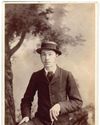
There are currently five models in Canon’s PowerShot G-series premium compact range. The G7 X Mark III slots in above the entry-level G9 X Mark II (£349), but below the more stills-focused G5 X Mark II (£899). Above these sit the flagship G1 X Mark III (£999) and the rather dated G3 X (£779) from 2015.
The main thing that sets the G7 X Mark III apart from the G5 X Mark II is that it lacks the pop-up electronic viewfinder. In addition, the G7 X Mark III’s zoom range is slightly narrower at 24-100mm – compared to 24-120mm on the G5 X Mark II. That said, the two cameras also have quite a lot in common: both are built around the same 20.1MP 1in stacked CMOS sensor and Digic 8 image processor, and both cameras share broadly similar styling, button layout and handling traits.
Features
At full resolution the sensor records images in a native 3:2 aspect ratio, although you can opt to shoot in 4:3, 16:9 and 1:1, albeit at reduced resolution. In addition to JPEG capture, you can select from raw and Compressed raw (C-RAW). Native sensitivity ranges from ISO 125 to ISO 12,800, plus an expanded setting of ISO 25,600 is available. The G7 X Mark III is equipped with both a mechanical and an electronic shutter; the former gives you a shutter speed range of 1-1/2000sec, while the latter provides 30-1/25,600sec. As with the G5 X Mark II you’ll need to use the mechanical shutter if you want to take advantage of the 20fps maximum continuous shooting speed, while the electronic shutter is automatically engaged when using the camera’s new 30fps Raw burst mode.
This story is from the {{IssueName}} edition of {{MagazineName}}.
Start your 7-day Magzter GOLD free trial to access thousands of curated premium stories, and 9,000+ magazines and newspapers.
Already a subscriber ? Sign In
This story is from the {{IssueName}} edition of {{MagazineName}}.
Start your 7-day Magzter GOLD free trial to access thousands of curated premium stories, and 9,000+ magazines and newspapers.
Already a subscriber? Sign In

140 years of change
AP has become the world’s oldest surviving consumer photo magazine because we have moved with the times, says Nigel Atherton

Preserving history in platinum
A deep dive into the meticulous art of platinum printing, and the collaboration between the Royal Geographical Society and Salto Ulbeek. Mike Crawford explores how they brought historical photographs to life with enduring beauty and precision

Life in the past lane
What was life like for an amateur photographer in 1884? John Wade takes a trip back in time

Choice cuts
How many trillions of photographs must have been taken in the past 140 years? Amy Davies asked some of our regular contributors for their favourites....a difficult task, to say the least

How good a camera can you buy for just £140?
Three members of the AP team see what they can find for the money

Round Five: The Best of the Rest
The APOY judges choose their favourite images that didn’t make the top ten of our Landscapes category

Amateur Photographer of the Year
Here are the top ten images uploaded to Photocrowd from Round Five, Landscapes, with comments by the AP team and our guest judge

FILM STARS A lifetime of landmarks
Cameras that hit the headlines between then and now. John Wade is your guide

140 years of Amateur Photographer
As AP celebrates its 140th birthday next month, Nigel Atherton looks back at its glorious past

John Wade considers...World War II: Home Front 1940, by A.J O'Brien
Say the word 'Wall's' to those of a certain age and two things spring to mind: sausages and ice cream.